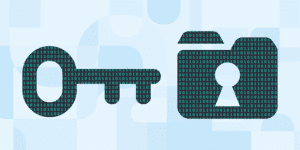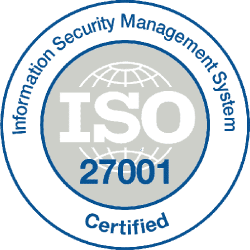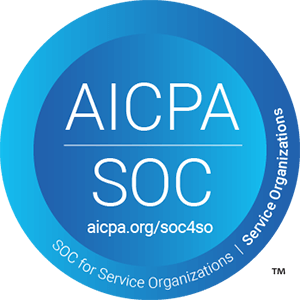The global COVID-19 pandemic has affected how the world does business, especially with the massive shift to working remotely from home. Likewise, this confusing time has given cybercriminals opportunities to exploit new attack vectors. According to Check Point’s 2021 mid-year report, cyberattacks have increased 29 percent worldwide against organizations. Even more worrying is the 93 percent rise in ransomware attacks. To prevent these types of attacks, organizations must mandate an effective cybersecurity awareness and training policy.
Don’t let your organization fall victim to a cybersecurity attack. Stay ahead of cyberattacks before they happen. Incorporate these top 13 can’t-miss cybersecurity tips into your organizational cybersecurity awareness strategy.
The importance of cybersecurity awareness

Here’s why cybersecurity awareness is critical:
- Protects your organization from the rise in cybercrime. With the increased use of devices and gadgets in both our personal and work life, technology has become ever-ubiquitous on a daily basis. It also opens us up to a greater risk of a cybercrime attack. Malicious actors use our gadgets and devices as opportunities to exploit their technological infrastructure for financial or strategic gains.
- Saves on costs incurred from an attack. Cyberattacks are expensive when they happen. They can result in potential lawsuits, reputational damage, operational downtime, loss of intellectual property, client migration, exposure of personally identifiable information, and more.
- Applies controls and education. Preventing cybercrime from affecting your organization starts with setting up controls and organizational security policies, including cybersecurity awareness training. To enforce these policies, you must clearly inform employees about them and provide regular training and testing to verify their compliance.
- Maintains trust with your clients and shareholders. In a world where cybersecurity incidents occur daily, your shareholders and clients trust you to protect their investments in your organization. To maintain their trust, your organization must employ an effective cybersecurity awareness policy with real-world metrics to gauge success.
- Increases employee confidence. Employees need clear policies and guidance to help calm anxieties and avoid potentially dangerous behavior. Regular cybersecurity awareness training gives them the confidence and required tools they need to keep your organization safe.
By establishing cybersecurity awareness policies and practices, you position your employees and organization to avoid cyberattacks and keep operating at full speed.
Top 13 cybersecurity awareness tips
To increase cybersecurity awareness in your organization, follow these 13 tips.
1. Create a security culture
Too often, organizations use speedy execution as an excuse to sidestep security. Create a cybersecurity culture within your organization that values security over expediency. This approach reduces the likelihood of human error and social engineering attempts that can cause a full-blown security incident.
2. Keep current on industry compliance
Maintain awareness of industry compliance and regulations as they apply to your organization. Common examples of regulations include the EU’s General Data Protection Regulation (GDPR), the California Consumer Privacy Act (CCPA), and the Gramm-Leach-Bliley Act for financial institutions. These mandates change often, so you must regularly keep current on them. Failure to comply with these regulations can result in service disruption, fines, and potential lawsuits.
3. Prepare for phishing and ransomware attacks
Malicious actors use the social engineering tactic of phishing to trick employees into an action that compromises organizational security. These actions can result in a full ransomware event that completely shuts down operations. Because phishing relies on social pressure and manipulation, the only measurable way to provide effective anti-phishing training is through repetitive simulations, smoothly integrated into your employees’ daily workflow. With training backed by real-world metrics, you can see your employees’ progress in their ability to identify phishing attempts over time.
4. Protect sensitive personal information
The EU’s GDPR regulations define personal data as “any information relating to an identified or identifiable natural person (or ‘data subject’).” Protecting your organization’s sensitive information requires maintaining oversight over how it’s stored and retrieved and who has access. Beyond securing the hardware and software layers, you must consider the human layer. Without proper cybersecurity training for your employees, they might fall victim to social engineering techniques, such as phishing. As a result, malicious actors can extract their personal identifiable information, leading to identity theft or even a full-blown data breach.
5. Create a security checklist for remote workers
Create a security checklist for your remote workers—whether they’re on the road or comfy at home—to make it easier for them to comply with your security policy. Although the specific entries on your checklist may differ across departments or organizations, the following items always apply:
- Maintain strong password security. Don’t use a weak password that can be guessed or discovered easily through minimal research, such as birthdays, addresses, or child or pet names. Also, don’t use the same password across multiple services.
- Always use a virtual private network (VPN) to encrypt and secure communication between yourself and the organization’s network.
- Update your device’s operating system and any installed software with the latest security patches.
- Disable Bluetooth discovery on all your devices.
- Disable auto-connection to insecure Wi-Fi access points on all your devices.
- Regularly update your contact information with your IT department in case of an emergency.
6. Lock down your data center

Grant access by using a Zero Trust posture. Review your security policies periodically to ensure no legacy or out-of-scope access remains after an employee changes position or leaves employment.
Locking down your data center also requires employee cybersecurity awareness training. Without training that measures real-world staff compliance with security policies, your sensitive data can easily slip through the cracks.
7. Secure your supply chain
Supply chain attacks have dominated technology news as of late. The reason is warranted with a four-fold rise in attacks expected for 2021. When a hacker breaches a service used by multiple organizations, the breach can spread to the clients of that service as demonstrated by the SolarWinds cyberattack. To secure your supply chain, establish the personnel, policies, and tools needed to monitor the third-party services that can affect organizational stability. Also, create a contingency plan for cases when supply chain services fail.
8. Regularly install software updates
When a software vendor discovers and then fixes an exploitable software bug, within just a matter of hours to days, the exploit is integrated into automated systems that malicious actors use to breach into organizations. You must secure your software layer through regular software and security updates, or risk exposing your organization’s vulnerabilities. This same guidance applies to in-house designed software that uses vulnerable third-party code libraries.
9. Require multi-factor authentication
Multi-factor authentication helps mitigate security failure by requiring multiple forms of identification beyond a simple password. This way, even if your password leaks, a second or third form of authentication is required to gain access.
For example, an SMS message is a well-recognized form of multi-factor authentication that requires a single-use number to log into a service immediately after a user enters their password. However, SMS based 2FA is becoming insecure, and may lead to SMS phishing attacks, also known as “smishing” attacks. As such, more advanced methods of multi-factor authentication exist, such as token generators, biometric scanners, and geolocation trackers.
10. Adopt a scientific training method

- Delivering continuous bites of information to employees without disrupting their focus
- Optimizing delivery times to enhance performance
- Using just-in-time learning to enhance training retention rates
Plus, it provides in-depth statistics by employee, department, and organization to help you gauge where training is successful or more training is required.
11. Focus on your employees’ specific needs
Each of your employees is unique with individual needs for learning. Therefore, effective cybersecurity awareness training requires tailoring the experience to each employee. This ability to customize training is particularly important in global organizations where personnel speak multiple languages and come from varied ethnic and cultural backgrounds. To meet these varied needs, cybersecurity training requires clear, engaging content and must integrate with a cultural context each employee can connect with. Otherwise, poorly translated text or the wrong cultural cue can reflect badly on your organization and result in low cybersecurity awareness retention.
12. Engage employees in real-world simulations
Often, cybersecurity is an afterthought for organizations. At best, they might offer only minimal training that incorporates extensive reading material, attending a long presentation, or watching videos. In reality, strong cybersecurity awareness requires training that smoothly integrates into an employee’s workflow to enable training in the desired context.
For example, you might need to train employees to detect a phishing or other social engineering attack. A phishing email simulation crafted specifically to an employee’s work context tests their cybersecurity awareness level in a real-world manner.
13. Train continuously in small bites
The most important factor in cybersecurity awareness training is retention. Forcing information and technical details on employees in a single session or over a short period can scare and overwhelm them, making it difficult to retain the content.
Successful cybersecurity awareness training requires repetition over a long period. To minimize the scare factor and maximize retention, push cybersecurity awareness training in concise, continuous bites of information, once or twice a month over a period of at least one year. By sending employees targeted cybersecurity simulation campaigns throughout the year, you gain data points and metrics required to evaluate how an employee’s cybersecurity awareness evolves. These metrics give your organization’s management and investors confidence in knowing your cybersecurity awareness training is effective in real-world scenarios.
Invest in an effective cybersecurity awareness training program
Take the next step, and invest in a scientifically proven cybersecurity awareness program rooted in real-world simulations that integrate right into your employees’ daily workflow. Through AI and ML technologies, you can craft customizable cybersecurity awareness campaigns and review metrics to gauge the program’s effectiveness.
Cybersecurity awareness is an investment in the future stability of your organization. Numerous companies have suffered the ill-fated results of lacking cybersecurity awareness; don’t risk becoming another example.

















